It dawned on me that period piece attire worn in popular Arabic TV serials resembles the elaborate and beautiful brocade designs I used to see in the Syrian capital.
History-based TV dramas that fill the airwaves during the Muslim month of Ramadan include Syrian productions, some very lavish, but in recent years filmed outside the country.
It brought back memories of the Nassan workshop and house on Hanania Street in the Bab Sharqi area of Damascus that gained world renown for its refined and exquisite products.
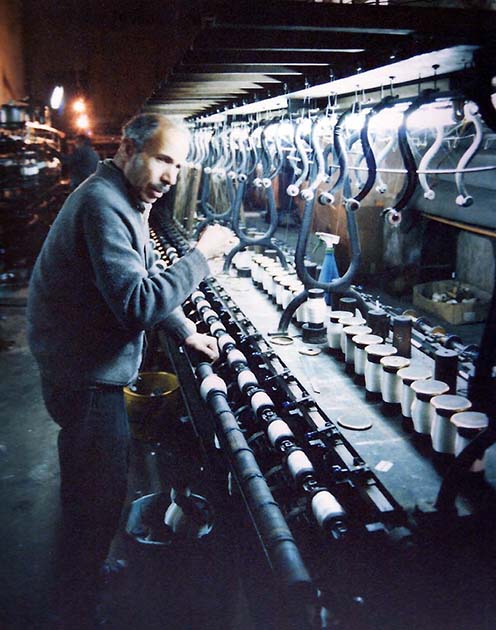 Nassan craftsman juggles hundreds of spools and threads (Abu-Fadil)
Nassan craftsman juggles hundreds of spools and threads (Abu-Fadil)
Since the conflict in Syria broke out over two years ago, there have been many calls to warring factions to spare the country's historical and heritage sites, often to no avail.
All I could find when searching online for the Nassan Palace was a Facebook page that had not been updated since January 2013, which made me wonder if the fierce battles in and around the city had also taken a toll on it.
 Nassan Palace's engraved doors, windows & ceilings (Abu-Fadil)
Nassan Palace's engraved doors, windows & ceilings (Abu-Fadil)
A veritable Who's Who of international VIPs and glitterati had walked through the facility's doors. They had worn the shimmering threads that made the Georges Nassan shop a landmark in Damascus and worldwide.
The draw: brocade, that silk-based fabric that becomes richer and more elegant with the addition of gold and silver thread.
Queen Elizabeth II's coronation dress came from the Nassan Brothers' loom and was offered as 30 yards of uncut brocade by the Syrian government at the time.
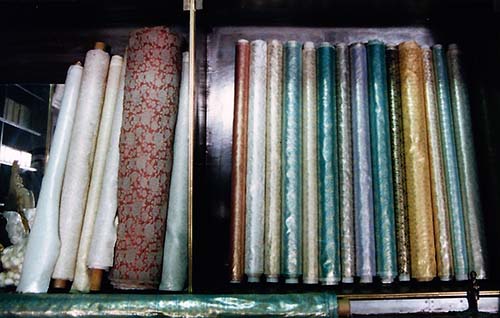 Shimmering brocade fabric in Damascus (Abu-Fadil)
Shimmering brocade fabric in Damascus (Abu-Fadil)
The dress was in the Tower of London with the crown jewels, family patriarch Georges Nassan told me in 1991. He was 82 at the time.
The late Lord Mountbatten signed his name in the guest book, as did Christina Onassis, former Austrian president Kurt Waldheim, Henry Kissinger when he was U.S. secretary of state, and the Aga Khan said he left his heart there.
They and others were drawn to the exotic world of brocade, which is used not only in chic clothing, but also to make lavish drapes and bedspreads for those who can afford it.
Nassan told me a lot of brocade had been machine made but that he introduced the hand-made variety, adding that the hand-loomed fabric was softer to the skin. He had pioneered the process four decades earlier.
I was thrilled when he took me on a tour of a building that housed a then 200-year-old workshop.
I haven't been back in years. Is it still there and has it survived the Syrian civil war?
The facility boasted vintage machines that seemed like museum pieces. In its heyday, there were 650 employees, but with the collapse of the Ottoman Empire and the advent of World War I, the number of employees dwindled to about 40.
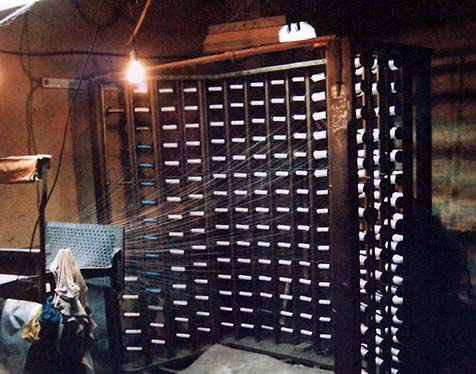 Colored and gold threads feeding into an antique loom (Abu-Fadil)
Colored and gold threads feeding into an antique loom (Abu-Fadil)
Nassan's grandfather had seven shops, one of which was opened in 1890 on the Rue d'Haut Ville in Paris. It closed in 1960 after one of the Nassan brothers died.
Another was situated in the old bustling Khan El Khalili district of Cairo at one point, but also shut down decades later when sales dropped. There were outlets in London, Tunis, and Algiers as well as agents in Berlin and Constantinople (before it became Istanbul).
The fabric for clothing items was on display when I visited, but Nassan told me they had stopped making silk rugs because the best craftsmen were all Armenians and they had emigrated, leaving no one behind who knew how to keep up the production.
Traditionally, the silk was imported from China but later the Nassans turned to a Syrian village where cocoons were spun into threads and dyed, colored, and shaped as required by the workshop's employees.
Bent over an antique wooden frame holding 260 spools of pure silk, I saw a worker who turned a web of 8,150 threads into clumps of thicker thread that were later dyed into dazzling and shimmering colors.
The threads were then turned into brocade on a loom.
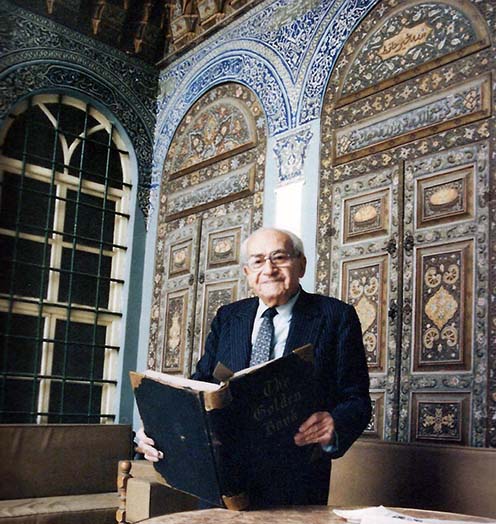 Georges Nassan & The Golden Book in 1991 (Abu-Fadil)
Georges Nassan & The Golden Book in 1991 (Abu-Fadil)
The workshop had served as a training facility for generations of brocade masters, as attested by a collection of yellowing pictures on display.
Young girls in the 1890s were trained to engrave brass items for sale in the shop, while legions of young men and boys were trained for brocade work or mother of pearl inlaid wood pieces like chairs, cupboards, boxes and tables.
Nassan insisted on showing me the family quarters - a 200-year-old, 30-room "palace" - adjoining the workshop and sales room.
"Qasr Al Nassan," as it was known, boasted the requisite Damascene marble fountain in a central courtyard around which every door and window with their engravings and tiles told a different artistic history.
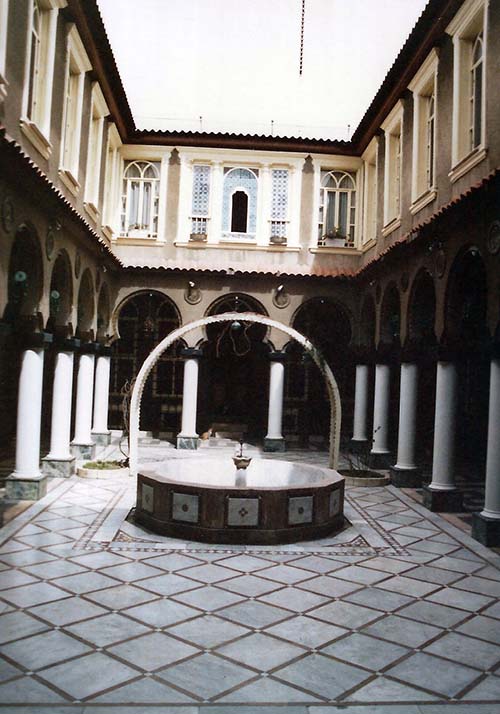 Nassan Palace's central courtyard (Abu-Fadil)
Nassan Palace's central courtyard (Abu-Fadil)
The courtly octogenarian produced a large dusty leather-bound book - The Golden Book - in which world figures had signed their names and written laudatory remarks for all to see.
"This is a beautiful place for doing beautiful work," wrote former U.S. president Jimmy Carter on March 17, 1983, during a visit with his wife Rosalyn.
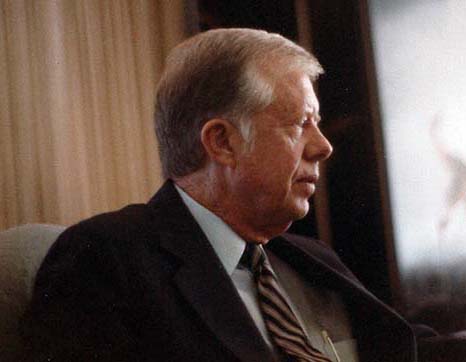 Former U.S. president Jimmy Carter (Abu-Fadil)
Former U.S. president Jimmy Carter (Abu-Fadil)
Where are they all now?
